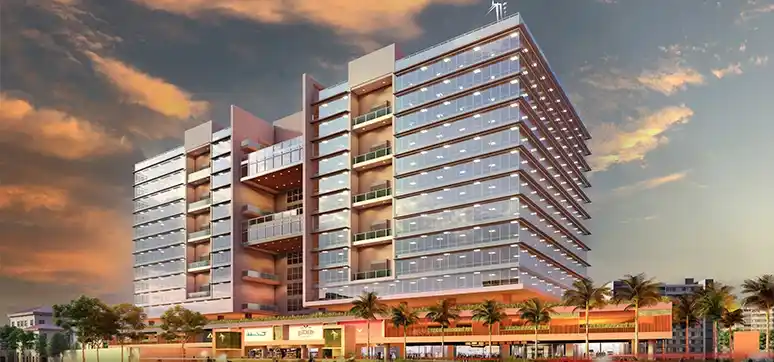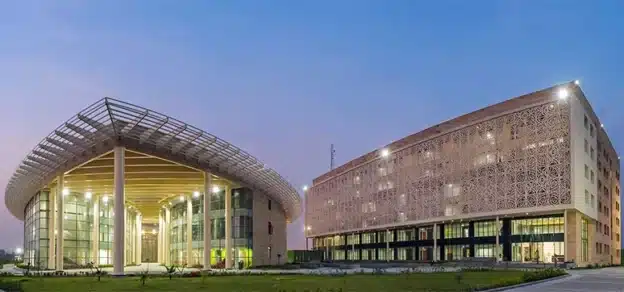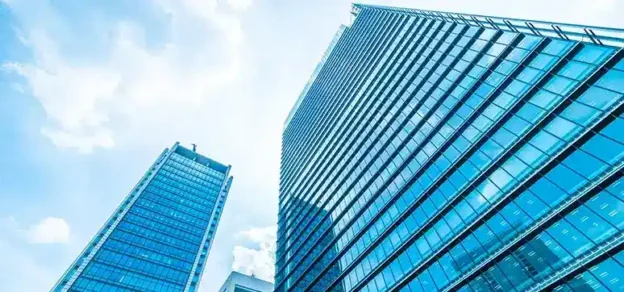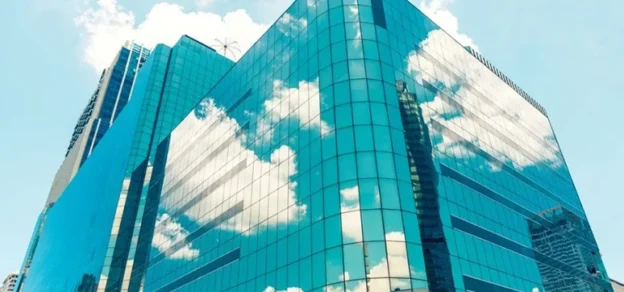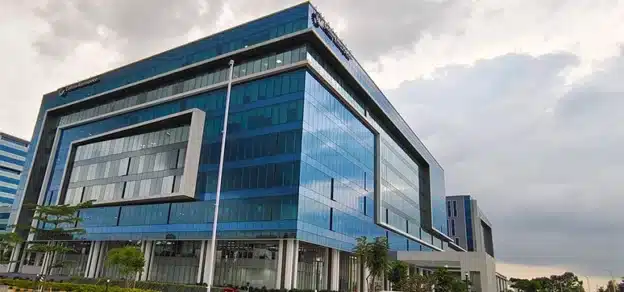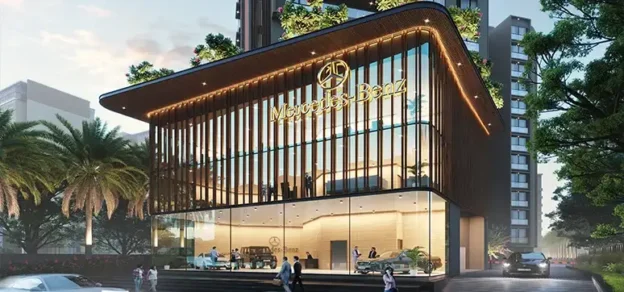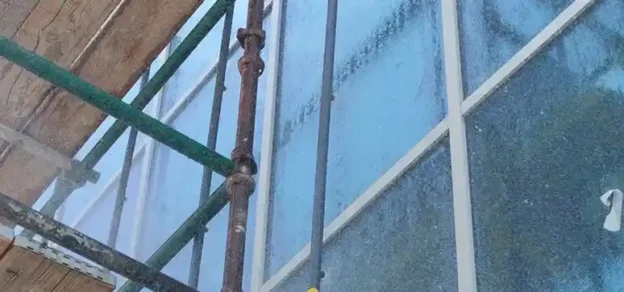The choice of glass for a particular project will depend on several factors, including the desired performance characteristics, design aesthetics, and budget. Here are some common types of glass and their ideal applications:
• Annealed glass: This is the most basic type of glass often used in low-rise buildings or interior partitions.
• Tempered glass: Tempered glass is a type of safety glass that is more durable and resistant to breakage than annealed glass. It is often used in applications where safety is a concern, such as doors, windows, and other building openings.
• Laminated glass: Laminated glass is a type of safety glass that is made up of two or more layers of glass, with a plastic interlayer in between. It is often used in applications where safety is a concern, such as skylights, balconies, and exterior walls.
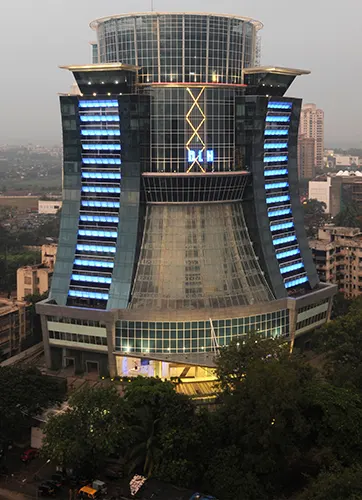
• Low-E glass: Low-E glass has a special coating that reflects infrared radiation, keeping the interior of the building cooler in summer and warmer in winter. It is often used in applications where energy efficiency is a concern, such as in high-rise buildings and other large commercial buildings.
• Insulated glass: Insulated glass consists of two or more layers of glass with a sealed air space in between. It is often used in applications where energy efficiency is a concern, such as in high-rise buildings, hospitals, and other large commercial buildings.
• Tinted glass: Tinted glass is designed to reduce the amount of sunlight and heat that enters the building, making it ideal for applications where energy efficiency is a concern. It is often used in high-rise buildings, offices, and other commercial buildings.
• Decorative glass: Decorative glass can be used to create a unique and attractive design element in a building. It is often used in lobbies, entryways, and other areas where design aesthetics are a priority.
MOST COMMON GLASS FAÇADES TYPES
• Unitized curtain wall systems are prefabricated, factory-assembled systems delivered to the building site in panels. They are installed directly onto the building frame with the help of a crane. This type of system can be erected quickly and is well-suited for buildings with numerous repeated floor plans.
• Semi-unitized curtain wall systems are a hybrid between stick-built and unitized systems. Some glazed components are assembled at the factory while remaining on-site. This system is typically faster than a fully stick-built system requiring minimum labour.
• Stick-built curtain wall systems are assembled on-site, with each component installed separately. This type of system requires more on-site labour than a pre-fabricated system but permits more customisation in terms of the size and shape of each panel.
• Point-supported glass façades, also known as spider glazing, employ point-fixed glass panels that are hung from a steel structure. The panels are connected to the structure with small metal fittings, giving the impression of a floating glass surface. This type of system is ideal for buildings with large glass surfaces and unobstructed views.
• Blast-resistant curtain wall systems are designed to withstand the force of an explosion. They consist of laminated glass panels attached to the building frame with specially designed fasteners and anchors.
• Photovoltaic curtain wall façade systems are designed to generate electricity from sunlight. The system consists of solar cells embedded in glass panels which is ideal for buildings that generate their electricity reducing carbon footprint.
Glass façades are designed to meet specific performance requirements using different glass types, coatings, and shading devices. The following are some options:
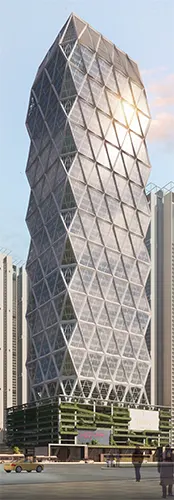
• Thermal insulation: Glass façades can be designed to improve thermal insulation by using double or triple glazing, which provides better insulation by trapping air between the layers of glass.
• Noise reduction: Laminated glass reduces the sound of façades. It consists of two or more layers of glass with an intermediate layer that acts as a sound absorber, reducing the noise that enters the building.
• Solar control: Glass façades can be designed with tinted glass that absorbs and reflects solar radiation, reducing the heat entering the building. Solar control coatings, such as reflective or spectrally selective coatings can be applied to the glass to reduce solar radiation entering the building.
• Daylighting: For this purpose, Glass façades can be designed, with high-performance glass allowing more natural light into the building, minimising the need for artificial lighting. This can help improve indoor air quality and reduce energy consumption.
• Shading devices: Shading devices, such as louvers or external shading devices, can be installed on the glass façade to reduce solar heat gain enabling energy efficiency. It can be adjusted allowing occupants to control the light and heat entering the building.
PROS AND CONS OF GLASS FAÇADE BUILDINGS
Like any building material, glass façades come with their own set of pros and cons. The advantages are aesthetic appeal, natural light, energy efficiency and flexibility in design. While the disadvantages are cost, maintenance, safety concerns, glare and heat gain.
Glass façades can have significant environmental and sustainability issues that need to be addressed to reduce their impact on the environment. Here are some of the common issues which can be mitigated:
Energy consumption: Glass façades can lead to increased energy consumption due to higher heating and cooling loads. To mitigate this issue, Low-E coatings can be applied to the glass, which reflects heat back into the building during the winter months and reflects it out during the summer months.
Solar heat gain: Glass façades can allow too much solar heat gain, resulting in higher energy consumption for air conditioning. This can be mitigated by incorporating shading devices such as external louvers, vertical fins, or brise-soleil.
Bird collisions: Glass façades can pose a significant risk to birds, who can mistake the reflective surface for the open sky and collide with the glass. To mitigate this issue, bird-friendly glazing options can be incorporated into the design, such as patterned glass, fritted glass, or UV reflective coatings.
End-of-life disposal: Glass façades can be difficult to recycle, leading to increased waste and environmental impact. This can be done because glass panels can be designed to be easily removable and replaceable, allowing for easier maintenance and replacement without needing to dispose of the entire panel.

Light pollution: Glass façades can contribute to light pollution, especially in urban areas. To mitigate this issue, it can be designed to include light-diffusing films or textures that reduce the amount of light emitted into the surrounding environment. Embodied carbon: Glass façades can have a significant embodied carbon footprint due to the energy-intensive manufacturing process of glass. To mitigate this issue, low-carbon glass options can be chosen, such as recycled glass, low-iron glass, or bio-based glass.
GLASS FAÇADES OF THE FUTURE
In the future, glass façades will evolve and improve, becoming more advanced and sustainable. Here are some potential trends and developments that may shape the future of glass façades:
• Smart Glass: Smart glass technology is incorporated in some buildings and will become more prevalent in the future. This type of glass can change its transparency or reflectivity in different environmental conditions, such as temperature or light levels, reducing the need for artificial lighting and shading devices.
• Nanotechnology: Nanotechnology can create advanced coatings that improve energy efficiency and self-cleaning properties of glass façades. These coatings reflect more sunlight or absorb more heat, reducing the energy needed for heating and cooling.
• Integrated Solar Panels: Glass façades could incorporate integrated solar panels, which generate electricity from sunlight while allowing natural light to enter the building.
• Biomimicry: A design approach that seeks to imitate nature to create more sustainable and efficient systems. Glass façades could be designed using biomimetic principles of plants that use photosynthesis to convert sunlight into energy.
• Innovative Shading Devices: Shading devices such as louvers, fins, or brise-soleil could be designed with innovative and energy-efficient materials, such as wood or bio-based materials.
• Increased Recyclability: In the future, glass façades could be designed to be easily recyclable, reducing their environmental impact and contributing to a more circular economy.
WAYS TO KEEP INFORMED
One way to stay informed is to attend international exhibitions and conferences on glass technology and building materials. These events provide an opportunity to network with industry professionals and learn about the latest products and technologies through product demonstrations, presentations, and panel discussions.
Another way to stay updated is to follow industry publications, which provide news and insights on the latest developments in the industry, product reviews, and expert opinions. Social media platforms such as LinkedIn, Twitter, and Facebook can help update you on the latest glass products and technologies available in the market. By following industry leaders, companies, and relevant hashtags, individuals can stay informed on the latest news and developments, in real-time. Finally, attending webinars and online training courses can be a great way to learn about new glass products and technologies. Many companies and industry organizations offer online training sessions on glass performance, energy efficiency, and sustainability.
